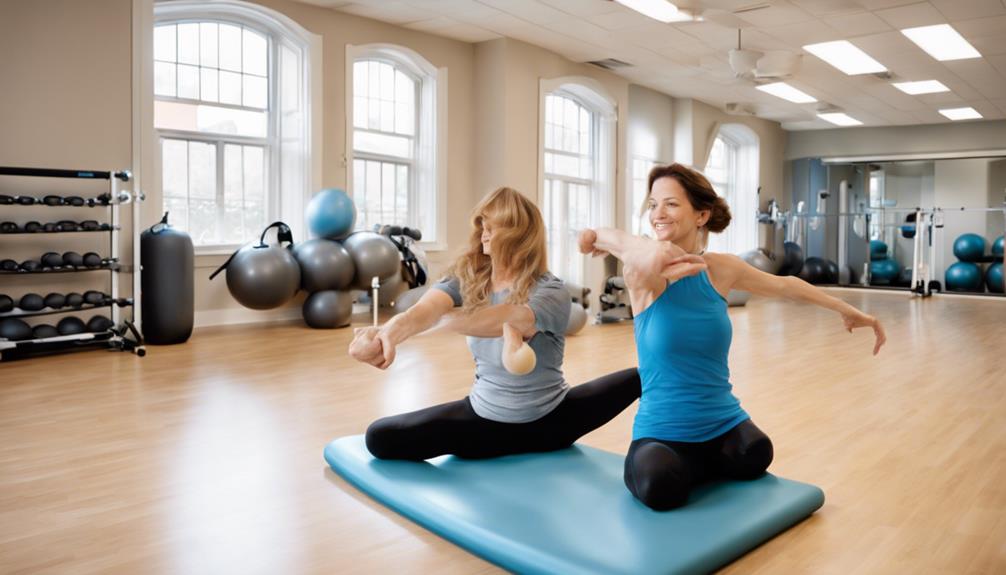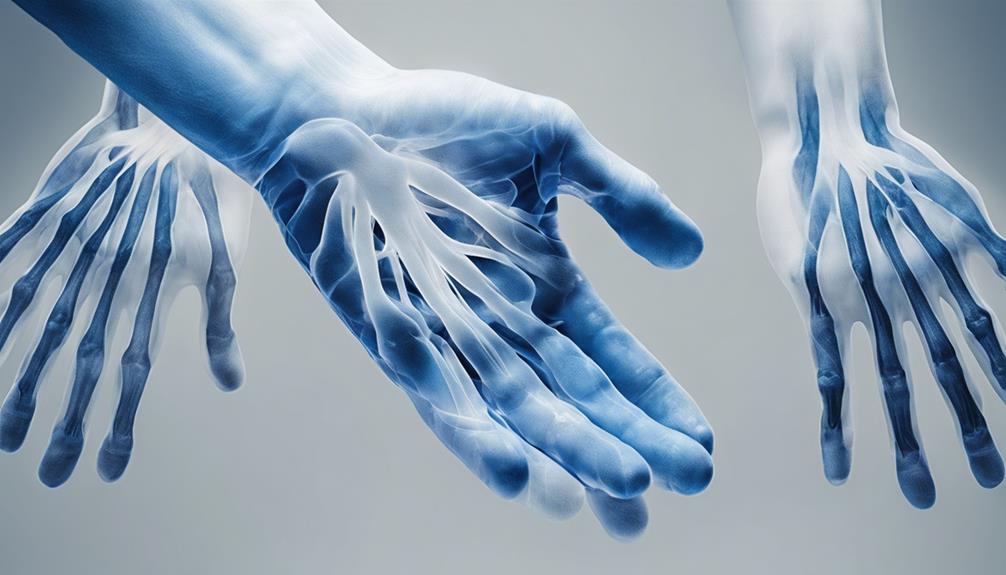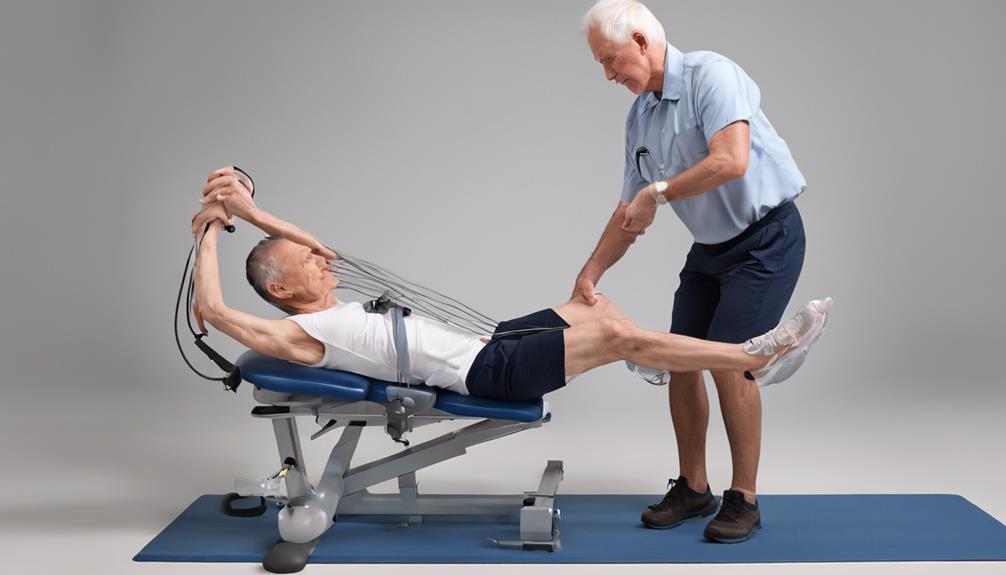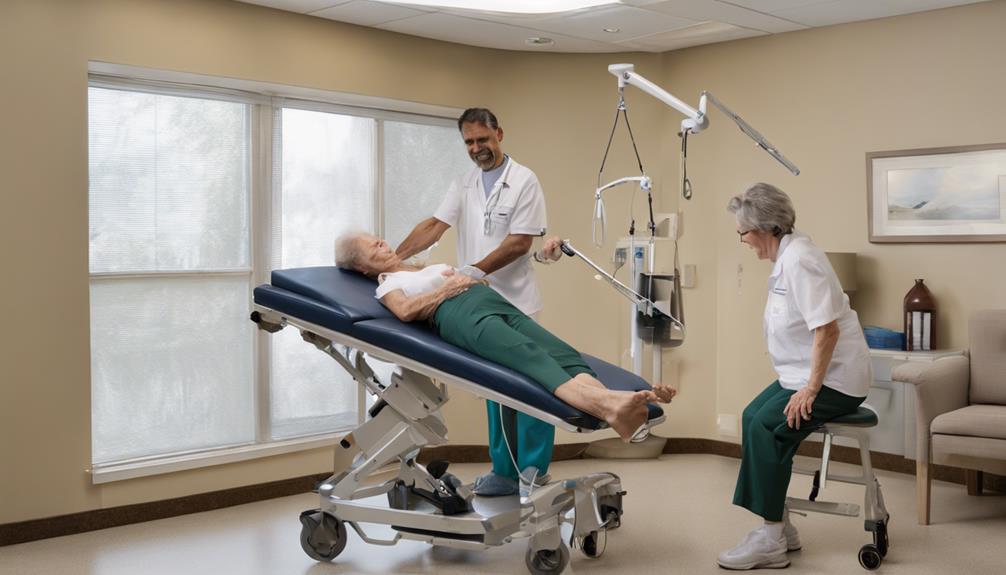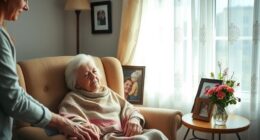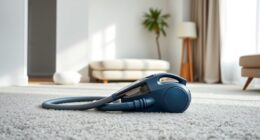When it comes to recovering from a brain stroke, finding different rehabilitation exercises is akin to opening the door to new possibilities. What specific physical movements and cognitive tasks can lead stroke survivors to a better future?
Let's explore the intricacies of these exercises and the profound impact they can have on the journey to recovery, offering a glimpse into the transformative power of targeted physical and cognitive activities post-stroke.
Key Takeaways
- Cognitive exercises enhance problem-solving skills and memory retention.
- Engaging in brain stimulation activities aids in cognitive function improvement.
- Mirror therapy benefits motor function and dexterity in stroke survivors.
- TENS machines assist in muscle stimulation and motor function improvement.
Cognitive Exercises for Stroke Recovery
Engaging in cognitive exercises after experiencing a stroke significantly enhances problem-solving skills, memory retention, and overall clarity of thought. For stroke survivors, these exercises are vital in aiding the brain's recovery process. By actively engaging in cognitive therapy, survivors can retrain their brains to improve cognitive function and memory. Activities such as board games, brain teasers, and puzzles have been shown to enhance abstract thinking and cognitive skills. Additionally, online brain games and apps offer convenient ways for stroke survivors to engage in cognitive training from the comfort of their homes.
Therapies focusing on cognitive exercises not only stimulate the brain but also assist in improving motor skills and overall quality of life post-stroke. Crafting and other creative activities provide avenues for problem-solving and cognitive function enhancement. These exercises offer a holistic approach to stroke recovery, addressing both physical and cognitive aspects to promote overall well-being and independence.
At-Home Brain Exercises for Recovery

For effective stroke recovery at home, incorporating memory games, puzzles, and cognitive challenges is beneficial. Engaging in brain exercises not only helps stroke survivors in their recovery journey but also contributes to enhancing memory skills, concentration, and problem-solving abilities. Activities like brain teasers, word games, Sudoku, and board games such as chess or Scrabble are great ways to stimulate the mind and improve cognitive function post-stroke.
Here is a table highlighting different types of at-home brain exercises for stroke recovery:
| Type of Exercise | Description |
|---|---|
| Memory Games | Games like matching cards or remembering sequences. |
| Puzzles | Jigsaw puzzles or crossword puzzles for mental agility. |
| Cognitive Challenges | Brain teasers or Sudoku to enhance cognitive skills. |
Additionally, utilizing online cognitive therapy apps can provide accessible options for cognitive training and mental stimulation. These exercises, when practiced regularly, can aid in the overall rehabilitation process and support stroke survivors in regaining mental sharpness and agility.
Brain Stimulation Exercises for Rehabilitation
To facilitate effective rehabilitation post-stroke, integrating brain stimulation exercises into daily routines is crucial for enhancing cognitive functions and promoting neural recovery. For stroke patients, engaging in cognitive therapy activities can significantly aid in improving cognitive functions, such as memory, attention, and problem-solving skills. These exercises help rebuild neural networks and promote recovery by enhancing brain plasticity.
Furthermore, physical activities like dancing, swimming, and yoga stimulate the brain and contribute to the restoration of motor functions. Consistent practice of brain stimulation exercises, such as playing cognitive games, doing puzzles, or participating in memory activities like crossword puzzles and Sudoku, can help stroke patients regain brain function and enhance hand-eye coordination.
Mirror Therapy for Stroke Recovery

Mirror therapy, a technique utilizing reflections to assist in stroke recovery, has shown promising results in improving motor function and dexterity for individuals post-stroke. By triggering mirror neurons and providing visual feedback through the reflection of the unaffected limb, this therapy can effectively trick the brain into believing that the affected limb is moving correctly. Research indicates that mirror therapy is particularly beneficial for enhancing motor function, dexterity, and even reducing stroke severity in stroke survivors. It's most commonly used for the upper limb, especially in cases where movement is limited. Additionally, mirror therapy can also be applied to address issues like personal neglect and phantom limb pain.
During mirror therapy sessions, basic exercises and functional tasks are performed in front of a mirror, focusing on correct form rather than speed, typically lasting between 20-30 minutes with a high repetition of movements. This therapy's simplicity combined with its ability to retrain the brain makes it a valuable tool in stroke recovery programs.
TENS Machine for Stroke Recovery
Utilizing a TENS machine for stroke recovery can provide effective muscle stimulation and aid in improving motor function and circulation in the affected areas post-stroke. TENS therapy stands for Transcutaneous Electrical Nerve Stimulation and offers a non-invasive, drug-free approach to rehabilitation.
Here are some key points to consider:
- TENS machines help improve muscle strength, reduce pain, and increase blood circulation in the affected areas, contributing to a faster recovery process.
- This therapy assists in muscle re-education, enhancing motor functions that may have been affected by the stroke.
- TENS machines can be used at home under supervision, making them a convenient and beneficial adjunct to traditional stroke rehabilitation therapies.
Frequently Asked Questions
How Long Does It Take for the Brain to Settle After a Stroke?
It varies, but typically, the brain begins to stabilize within weeks to months post-stroke. Neuroplasticity aids in forming new neural connections during recovery.
Recovery timelines differ based on stroke severity, health, and rehab efforts. It can take months to years for the brain to fully stabilize post-stroke.
Engaging in consistent rehab exercises and therapies can speed up the brain's settling process and improve recovery outcomes.
How Can I Strengthen My Brain After a Stroke?
We can strengthen our brains after a stroke by engaging in various activities. These include:
- Cognitive exercises like puzzles,
- Physical activities such as walking and yoga,
- Using cognitive therapy apps,
- Practicing mindfulness through meditation, and
- Seeking support from therapy sessions.
Each of these methods can help stimulate brain function, improve blood flow, enhance cognitive abilities, boost concentration, and aid in communication skills during the recovery process.
What Are 3 Therapies Most People Need After Having a Stroke?
After a stroke, most individuals typically require occupational therapy, speech therapy, and physical therapy for comprehensive recovery. These therapies focus on improving daily activities, communication skills, and mobility, respectively. They play a crucial role in addressing the diverse challenges faced post-stroke, aiding in regaining independence, enhancing cognitive abilities, and facilitating a smoother transition back to daily life.
The combination of these therapies forms a holistic approach to supporting stroke survivors on their journey to recovery.
What Is the Hardest Stroke to Recover From?
Recovering from a stroke can be incredibly challenging, especially when it involves the Middle Cerebral Artery. The impact on motor function, speech, and cognition makes it one of the most difficult strokes to recover from. Survivors often face obstacles in regaining independence and relearning daily activities.
Rehabilitation after a Middle Cerebral Artery stroke requires a comprehensive approach to address the diverse effects on physical and cognitive abilities.
Conclusion
In conclusion, engaging in brain stroke recovery exercises is essential for promoting cognitive function and memory enhancement post-stroke. Remember, 'Rome wasn't built in a day.' Progress may be slow, but every small step counts towards rebuilding brain connections and improving overall well-being.
Stay consistent, stay positive, and trust in the power of neuroplasticity to guide you on your journey to recovery. You've got this!
